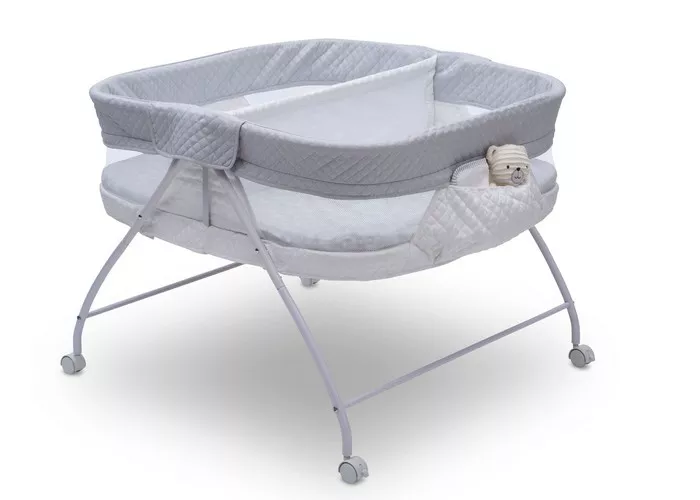As parents, ensuring the safety of our little ones is always a top priority, especially when it comes to their sleep environment. Crib liners, also known as crib bumpers, have been a common fixture in nurseries for decades, intended to prevent babies from getting their arms or legs stuck between crib slats and to cushion any accidental bumps. However, in recent years, concerns have been raised about the safety of crib liners, prompting parents to question whether they should be used at all.
In this comprehensive article, we will delve into the debate surrounding crib liners, examining the potential risks they pose and the purported benefits they offer. We will explore the latest research findings, expert opinions, and recommendations from pediatric organizations to help parents make informed decisions about whether crib liners are safe for their little ones.
Understanding the Purpose of Crib Liners
Before we delve into the safety concerns surrounding crib liners, it’s essential to understand their intended purpose. Crib liners are typically padded panels that attach to the inside of a crib, forming a barrier between the crib slats and the baby. They are designed to:
1. Prevent limb entrapment: One of the primary purposes of crib liners is to prevent babies from getting their arms or legs trapped between crib slats, which could lead to injury or discomfort.
2. Provide cushioning: Crib liners are also intended to provide a soft cushioning layer around the inside perimeter of the crib, reducing the risk of bumps and bruises if the baby accidentally rolls or moves around during sleep.
The Safety Debate: Risks Associated with Crib Liners
While crib liners may seem like a practical solution to common concerns, their safety has come under scrutiny in recent years. Several studies and organizations have raised red flags about the potential risks associated with crib liners. Let’s explore some of these risks:
1. Suffocation and SIDS risk: Perhaps the most significant concern surrounding crib liners is the risk of suffocation and sudden infant death syndrome (SIDS). According to the American Academy of Pediatrics (AAP), soft bedding, including crib bumpers, can increase the risk of suffocation, strangulation, or entrapment, which are all risk factors for SIDS.
2. Overheating: Crib liners can restrict airflow within the crib, potentially leading to overheating, especially if the baby’s face becomes pressed against the padding. Overheating is a risk factor for SIDS and can also increase the likelihood of other health issues, such as heat rash or dehydration.
3. Entrapment hazards: While crib liners are designed to prevent limb entrapment, there have been reports of babies becoming trapped between the crib liner and the mattress or between the liner and the crib frame. This can pose a serious risk of injury or suffocation if the baby is unable to free themselves.
4. Increased risk of falls: In some cases, crib liners may come loose or detach from the crib, creating a hazard that could cause the baby to fall or become entangled in the fabric.
Expert Recommendations and Guidelines
In light of these safety concerns, many pediatric organizations and experts have weighed in on the use of crib liners. The AAP, in particular, has issued guidelines recommending against the use of crib bumpers, citing the potential risks outlined above. Other organizations, such as the Consumer Product Safety Commission (CPSC), have also cautioned against the use of crib liners, emphasizing the importance of maintaining a safe sleep environment for infants.
Furthermore, the Juvenile Products Manufacturers Association (JPMA), a trade organization representing the baby products industry, has developed safety standards for crib liners. These standards aim to ensure that crib liners meet certain criteria for breathability, thickness, and attachment methods. However, even with these standards in place, some experts argue that the risks associated with crib liners outweigh any potential benefits.
Alternatives to Crib Liners
Given the safety concerns surrounding crib liners, many parents may be wondering if there are safer alternatives to consider. Fortunately, there are several options available that can help address common concerns without compromising safety:
1. Mesh crib liners: Unlike traditional padded crib bumpers, mesh crib liners are made from breathable mesh fabric that allows for better airflow while still providing a barrier between crib slats. Mesh liners are designed to reduce the risk of limb entrapment without the suffocation hazard posed by traditional bumpers.
2. Crib rail covers: For parents concerned about their baby’s teeth or limbs getting caught in crib slats, crib rail covers can offer a safer solution. These covers wrap around the top rails of the crib, providing a protective layer that prevents injury without the risk of suffocation or entrapment.
3. Sleep sacks or wearable blankets: To keep babies warm and cozy without the need for blankets or bedding, sleep sacks or wearable blankets are a safe alternative. These garments fit snugly around the baby’s body, reducing the risk of suffocation or overheating associated with loose bedding.
4. Firm mattress and fitted sheet: The AAP recommends that infants sleep on a firm mattress with a fitted sheet, free of any loose bedding, pillows, or soft toys. This reduces the risk of suffocation and ensures a safe sleep environment for babies.
Conclusion
In conclusion, the safety of crib liners remains a topic of debate among parents, pediatric experts, and regulatory agencies. While crib liners were once a common feature in nurseries, concerns about suffocation, SIDS risk, and entrapment hazards have led many organizations to advise against their use. Parents are encouraged to prioritize safety when selecting bedding and accessories for their baby’s crib, opting for alternatives such as mesh liners, crib rail covers, and sleep sacks that offer protection without the associated risks. By following expert recommendations and creating a safe sleep environment, parents can help reduce the risk of accidents and ensure their little ones sleep soundly.


